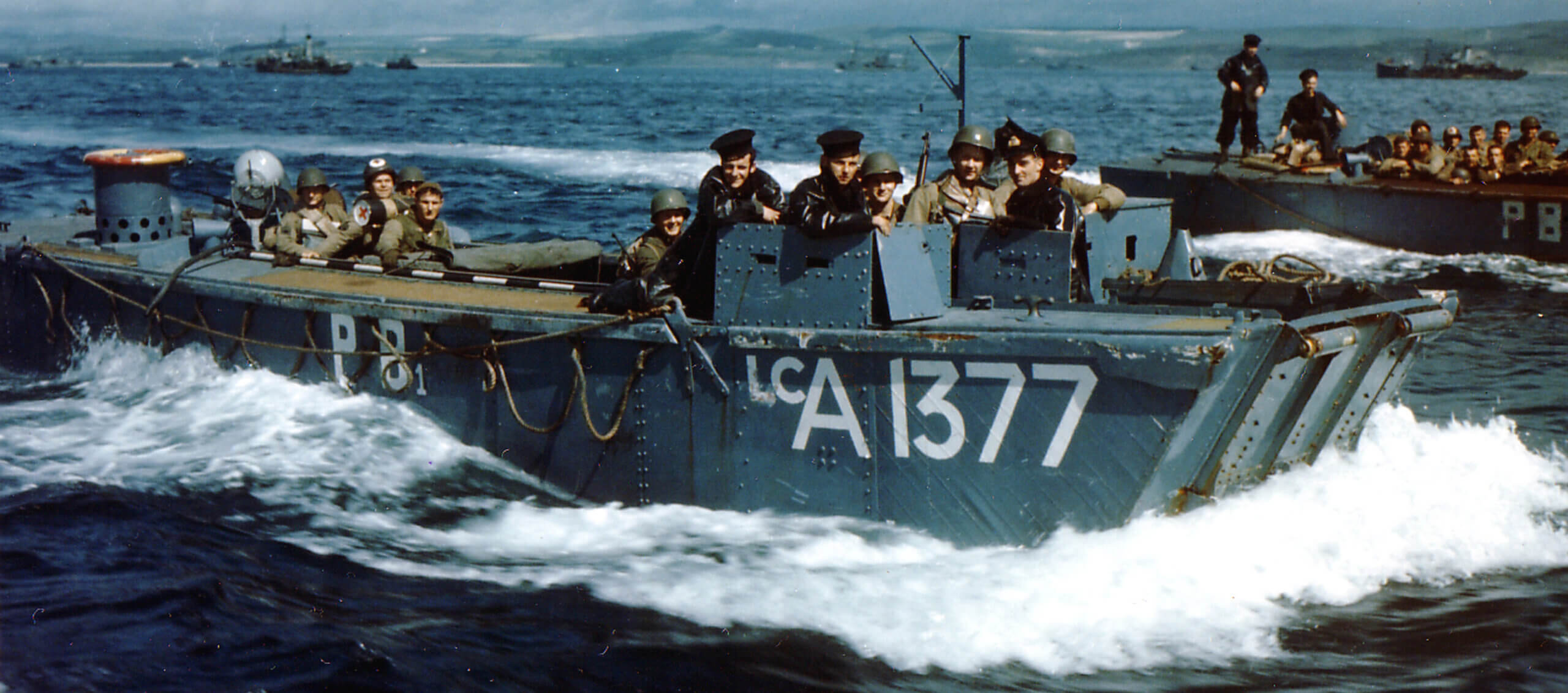| Page Created |
| June 13th, 2022 |
| Last Updated |
| June 25th, 2022 |
| United States |
 |
| Additional Information |
| U.S. Army Rangers Order of Battle Commanders Operations Equipment Multimedia References Interactive Page |
| Badge |
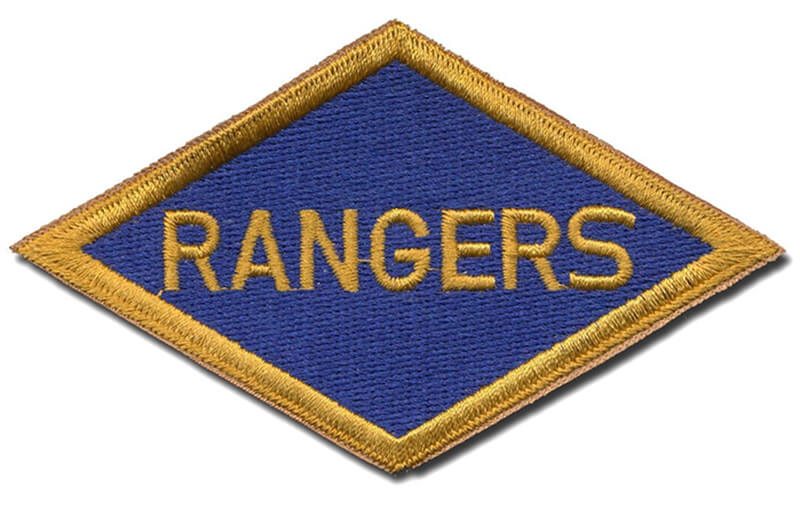 |
| Motto |
| Rangers Lead the Way |
| Founded |
| June 1st, 1942 |
| Disbanded |
| December 30th, 1945 |
| Theater of Operations |
| Northwest Europe Dieppe Norway North Africa Arzew oran Sened Station Djebel el Ank pass Italy Siciliy Anzio |
| Organisational History |
With a group as President Franklin Delano Roosevelt, his confidant, William Joseph “Wild Bill” Donovan (later Office of Strategic Services [OSS] director), and Army Chief of Staff, General George Catlett Marshall, as dedicated supporters of the British Commando concept, it could not take long before a similar unit would be available for The United States when it entered the war.
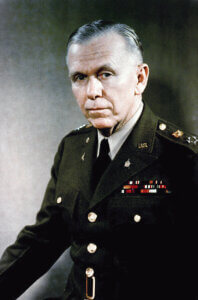
In the spring of 1942, General Marshall meets the British Lord Louis Mountbatten, Chief of Combined Operations, in London. They discuss the creation of an American Staff to work with and study the British Department of Combined Operations. This department is tasked with coordination and organisation of the British raiding of Europe.
On April 30th, 1942, a group of officers under command of Colonel Lucian King Truscott Jr. is ordered to England. Their specific order is: “To study the planning, organisation, preparation and conduct of Combined Operations, especially those of Commando type and to keep the CO. W.D. informed as to development in the training techniques and equipment pertaining to these and related operations. To initiate plans for the participation by American troops in these operations to the fullest possible and practicable extent with a view to affording actual battle experience to maximum personal and to plan and coordinate the training of the detachment designated for such participation. To provide information and recommendations relative to the techniques, training and equipment involved in those and related operations. To assist the Headquarters of Army Ground Forces in planning, organising, and conducting training in such operations in the United States. The following officers were assigned by W.D. order to Combined Ops on 18 May 1942: Brigadier General Lucian K. Truscott Jr, Lieutenant Colonel Lawrence B. Hilsinger, Major Theodor J. Conway and Lieutenant Colonel Haskell H. Cleaves.“
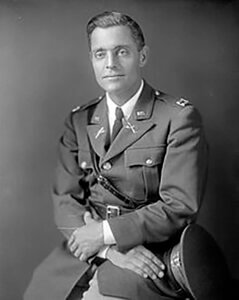
Colonel Lucian King Truscott Jr.
A soon as June 1st, 1942, a serie of directives are given to Truscott and his group to form the Ranger unit around. A few days later, on June 13th, 1942, the newly founded Headquarters European Theater of Operations U.S. Army (HQ ETOUSA) in London authorises the foundation of the 1st Provisional Ranger Battalion. Captain William Orlando Darby is appointed to be the leader of the unit. Darby is promoted to Major in process.
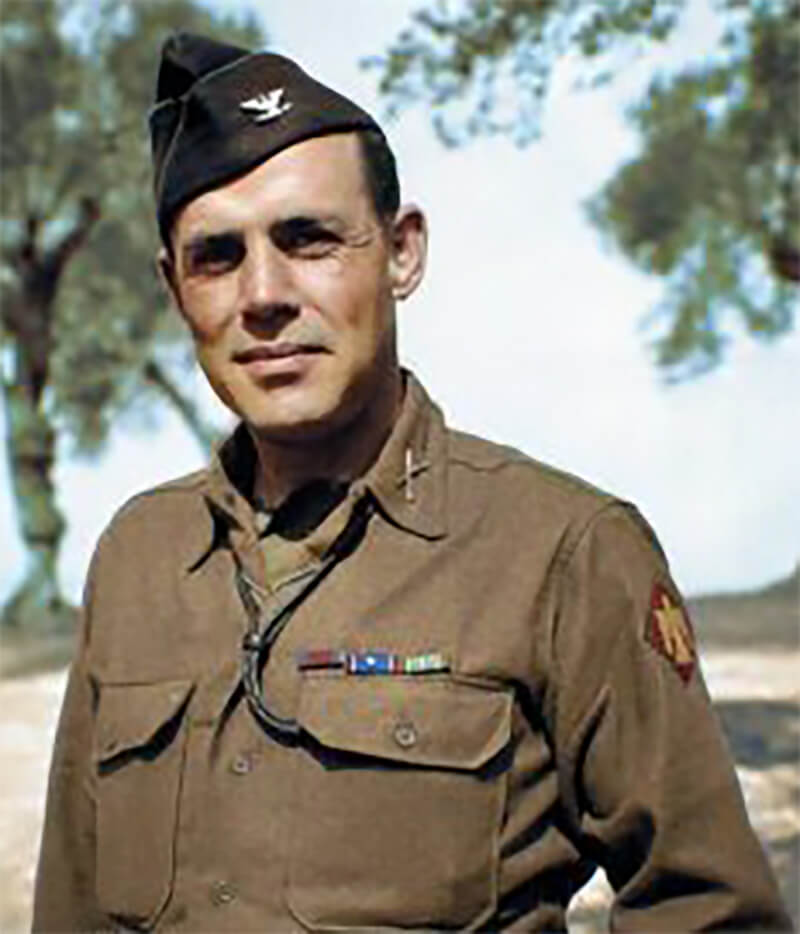
Selection of members of the unit starts days later. It is based on the selection of No.1 Commando. Soldiers from all U.S. units in Great Britain are allowed to volunteer. Applicants must have an excellent physical condition, mental state, and military record. Besides that, they must be fluent in at least one foreign Language. They are asked to fill out a questionnaire that is judge by a board consisting of Major Darby, Major Herman W. Dammer, and Captain Steve Meade, after which each applicant is interviewed by them. Over 2,000 men volunteered, most of them from the 34th Infantry Division, the 1st Armoured. Division and V Corps. Halfway June all members are selected and equipped. On June 19th, 1942, the 1st Ranger Battalion is activated at Carrickfergus, Northern Ireland.
On June 28th, 1942, the unit is sent to the Commando Training Depot, at Achnacarry Castle, Spean Bridge, Inverness-shire in Scotland for basic Commando training. Here the British instructors put them through the rigoureus commando course. The unit graduates on July 31st and is moved to Argyle, Scotland for a month of amphibious training with the Royal Navy.
After the Raid on Dieppe, the battalion is moved to Dundee, Scotland for coastal raid training in September 1942. Subsequently it is moved to the outskirts of Glasgow, Ireland as an attachment of the 1st Infantry Division. During this period, the battalion undergoes a reorganisation, in which D Company is temporarily reorganised as an 81 mm mortar company. At the same time, the unit starts training for the invasion of French North Africa. The unit leaves for Algeria in October and participates in Operation Torch.
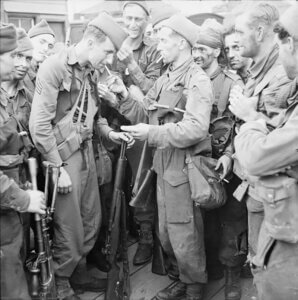
Meanwhile a second Ranger Battalion is being formed in Great Britain. On December 8th, 1942, General Gerow, the Commander of the 29th Infantry Division asks Major Randolph Millholland, who had just returned from the British General Headquarters Battle School to raise a Ranger Battalion from members of the 29th Infantry Division. Millholland accepts the challenge and starts with choosing the officers for the two companies he wants to raise the 29th Ranger Battalion (Provisional) with. The selection is similar as that of the 1st Ranger Battalion. This proces is completed on December 21st, 1942. With the selected men Millholland forms and trains a battalion along the British lines as he had learned. On the February 2nd, 1943, the unit moves to the Commando Training Depot at Achnacarry, Scotland.
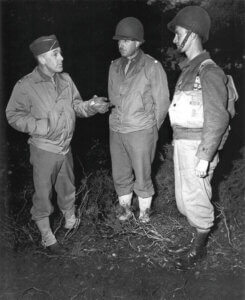
After six weeks the unit is transferred to East Leigh, Hampshire County, England and attached to Lord Lovett’s No.4 Commando for additional training. During that same period Millholland and four enlisted men are attached to No. 12 Commando personally participated in three raids in Norway. On the April 10th, 1943, the unit is moved to Tidworth, Wiltshire, England. Here two more companies are raised and trained. After they are fully trained the unit performs excellent in a combined exercise with the British, after which they transferred to Bude, North Devon, England on June 3rd, 1943. Here they received Specialised training and participated in an eleven-day long ration rotation exercise, where they covered 240 kilometres. After watching a training movie about Assault Operations, the complete unit moves to Dorlin House, Argyle, Scotland to receive Amphibious training of the Royal Navy, starting from September 2nd, 1943. After completing this training, members of the unit participate in operations with the British Commando’s, where they receive high recommendations for their performance. In September 1943, there is even talk of a full company participating in an operation. However, on October 16th, 1943, the unit comes to an unsuspected end and the men are returned to the 29th Infantry Division for infantry duty. Somehow “The War Department felt that they could bring over better trained Ranger type units from the states.” And with the 2nd and 5th Ranger Battalion coming over from the United States there was no need for another Ranger Battalion in Europe.

Meanwhile the 1st Ranger Battalion stays for two months in Arzew, Algeria acting as occupational force. On January 26th, 1943, they receive five officers and one hundred enlisted men to replace their losses. At the same time D Company is reorganised back into an assault company. On February 1st, 1943, the battalion boards thirty-two C-47’s and flies to Youk-Les-Bains Airfield, Algeria. Here they are attached to II Corps start planning several raids on the Axis forces.
The succes of the North African raids made General Marshall authorise the formation of two additional battalions on April 19th, 1943. The 83rd Chemical Mortar Battalion is attached to the three Ranger Battalions, and the complete unit is designated as the Ranger Force (Provisional). Since there is no headquarters authorised, Darby has to command both the 1st Ranger Battalion as the Ranger Force. The newly to be formed battalions draw their cadre from the 1st Ranger Battalion. Companies A and B form the cadre for the 3rd Ranger Battalion. Companies E and F form the 4th Ranger Rangers, and Companies C and D become the basis for a new 1st Ranger Battalion. During the same time recruiting teams scoured replacement depots and units to fill up the three battalions. The two new battalions are activated in Nemours, Algeria on May 21st, 1943, and designated as “Provisional”. On June 21st, 1943, the provisional status of the two new battalions and the Ranger Force is dropped. Darby has only weeks to train his force for Operation Husky, the invasion of Sicily.
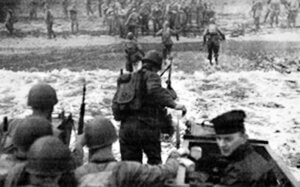
After Palermo on Sicily is taken the three battalions of Darby’s Ranger Force assemble there, and immediately begin the preparations for the invasion of Italy. The Ranger Cannon Company with four 75mm halftrack mounted guns is formed and attached to the unit. After taking part in the invasion of Italy the unit is retracted from battle in December 1943 and stationed at Lucrino Station near Naples, Italy. Here it starts training new replacements. Here on January 16th, 1944, the Ranger Force is redesignation as the 6615th Ranger Force (Provisional). It is authorised to form a Headquarters, it receives an extra battalion, the 509th Parachute Infantry Battalion and company H, 36th Engineer Regiment. Lieutenant-Colonel Darby is promoted to a full Colonel to command the unit.
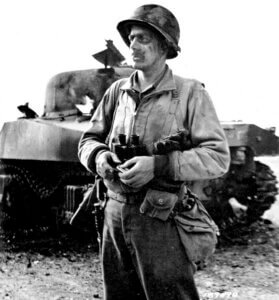
During the disastrous Anzio campaign around Cisterna di Littoria, Italy, in January 1944, the 6615th Ranger Force is almost annihilated. After the unit is retracted from battle. the 4th Battalion conducts a Fifth Army patrolling school at
Civitavecchia for a while. The 150 surviving members of the 1st and 3rd Battalion are sent to Camp Butner, North Carolina on May 6th, 1944, and from there on to various replacement training centres as instructors. In the end most are reassigned to the 1st Regiment. of the 1st Special Service Force. Honouring their legacy as Rangers, they were permitted to wear their Ranger Battalion scrolls over the Force’s arrowhead patch. The 1st and 3rd Battalion, now at zero strength, are administratively transferred to Camp Butner, North Carolina and inactivated on August 15th, 1944. The 4th Rangers are inactivated there on October 26th, 1944.
In January 1943, the Army Ranger School is established at Camp Forrest, Tennessee United States. A little later, on April 1st, 1943, the 2nd Ranger Battalion is formed there. The men undergo a training program similar to that of the Commandos and Rangers in Great Britain. The program is run by 1st Battalion officers and NCO’s that are no longer considered fit for combat. Major James E. Rudder takes command of the 2nd Battalion in June 1943. The unit moves to Fort Pierce, Florida in the beginning of September 1943 to attend the Scouts and Raiders School, for small boat handling. On September 17th, 1943, it moves to Fort Dix, New Jersey for advanced tactical training. The 2nd Battalion
departs for Great Britain on November 21st, 1943.
On September 1st, 1943, the Army Ground Forces authorises the formation of a second Ranger Battalion to be used in the upcoming invasion of Northwest Europe. The 5th Ranger Infantry Battalion starts it’s training at Camp Forrest, Tennessee United States on September 14th, 1943. The battalion receives a similar same basic training as the 2nd Battalion. After completing basic training, the unit moves to the Scouts and Raiders School in Florida for amphibious training in November. On November 20th, 1943, it moves to Fort Dix, New Jersey, for advanced tactical training. After completion in January 1944 the battalion departs for Great Britain. Here, at the end of April Lieutenant-Colonel Max Ferguson Schneider, of the 1st Battalion assumes command of the Battalion.
In Great Britain both battalions’ go through several cycles of training before joining up in the beginning of May for the preparations for Operation Overlord. On May 6th, 1944, the Provisional Ranger Group is formed. This group is commanded Lieutenant-Colonel Rudder, who also retains
command of the 2nd Battalion. The unit was attached to the 116th Infantry Regiment of the 29th Infantry Division.
After the Normandy invasion the both the 2nd and 5th Battalion are taken out of battle and refitted in the rear area. During the month of July, they train, receive replacements, and perform rear area security duties. After which both battalions are used in the battle for Brittany. In late September both battalions are sent to Belgium. The 5th Battalion stays there and during the months of October and November it provides security duties for the Twelfth Army Group Headquarters. The 2nd Battalion stays in Arlon, Belgium for two weeks to rest and receive replacements. While moving to Belgium, the Ranger Cannon Platoon is disbanded, and the crews transfer to the rifle companies. On October 20th, 1944, the 2nd Battalion is attached to the First Army’s VIII Corps and moves to Luxembourg. A little time later they are attached to the 28th Infantry Division. By November 14th, 1945, the battalion has assumed defensive positions outside Vossenach, Germany.
After the battle for Hill 400, the 2nd Battalion is then sent to the bivouac area in the Hürtgen Forest. Here it is rested and refitted. During the battle of the Bulge the unit is attached to 78th Infantry Division. With this division the unit is put back into battle, but their days of heavy fighting are over.
On December 24th, 1944, the 5th Battalion moves to Metz to for refitting. After selection, the 5th Battalion’s strength was still only 398 men and officers, some 108 soldiers below its authorised strength. The replacements are trained under sub-freezing temperatures and snowy conditions. After this the unit is send declared fit for action again.
When the war in Europe ends the 2nd Battalion is near Pilsen, Czechoslovakia. There they help the Military Government units by guarding supplies and rounding up German soldiers in hiding. After the surrender of Japan on August 15th,1945, the 2nd Battalion, is moved to Camp Lucky Strike, near Le Havre, France. On October 16th, 1945, boards the USS West Point to head back to the United States. Here the unit is moved to Camp Patrick Henry, Virginia.) On October 23rd, 1945, the 2nd Ranger Battalion is deactivated at that same place.
The 5th Battalion is in Luxembourg when the war in Europe ends. They move into Germany, and from there to Austria supporting Military Government units there. The 5th Battalion guards supplies and rounds up German soldiers. After the surrender of Japan on August 15th,1945, the 5th Battalion, is moved to Camp Lucky Strike, near Le Havre, France. Here they board the USS Sea Snipe for their return to the United States. The 5th Battalion is moved to at Camp Miles Standish, Taunton, Massachusetts. Here it deactivates on October 2nd, 1945.
Meanwhile early 1944 in the Pacific, Lieutenant-General Walter Krueger, commander the Sixth United States Army in the South West Pacific Area also calls for foundation of a Ranger Battalion. The unit is to be used for the invasion of the Philippines. He orders Lieutenant-Colonel Henry “Hank” Andrews Mucci to take command the 98th Field Artillery Battalion. At that time Mucci who had come from Hawaii where he operated the predecessor of the Ranger Combat Training School, Fort Shafter, Hawaii. Arriving in April 1944, he starts to transform this Unit into a Ranger Battalion. He downsizes the battalion from 1,000 to 500 men. Personnel not wishing to become Rangers are transferred out, while volunteers are assigned. From her on he starts an intensive training program. The 6th Ranger Infantry Battalion. is activated on September 24th, 1944, at Hollandia, New Guinea. The unit is active in the Gulf of Leyte and Luzon. After Luzon they start preparing for the invasion of Japan. However, the end of the war catches up with them. On September 15th, 1945, the unit departed for Japan to conduct occupational duties. On December 30th, 1945, the unit was deactivated in Kyoto, Japan.

